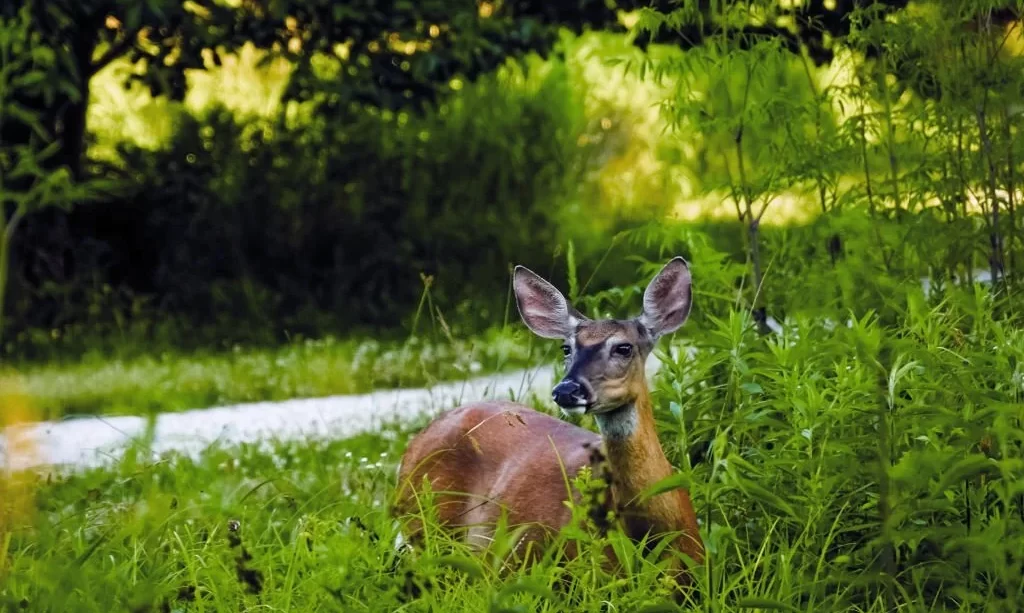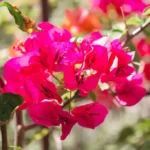In the world of garden blooms, coneflowers stand as a symbol of enduring charm and natural elegance. With their striking appearance and vibrant colors, these perennial favorites have won the hearts of gardeners around the world. However, as gardeners tend to their cherished Echinacea, a common question often arises: do deer share our admiration for these blooms, or do they see them as a tempting treat? In this exploration, we delve into the realm of coneflowers, shedding light on their botanical essence and unraveling the mystery of whether deer consider them a delectable addition to their diet.
- Made in USA
- UV Treated
- 600-650 lb breaking load
- Mesh: 1.77 in x 1.97 in
- Exclusive rounded tensile design
Coneflowers 101
Before we embark on the quest to uncover the dining preferences of deer, let’s familiarize ourselves with the allure and characteristics of coneflowers.
A Visual Marvel: Coneflowers, scientifically known as Echinacea, are celebrated for their striking appearance. Their bold, daisy-like blooms boast a central cone-shaped disc surrounded by vibrant petals in shades of pink, purple, white, and even orange. These blossoms not only captivate the human eye but also beckon pollinators like butterflies and bees, making them a cherished addition to pollinator-friendly gardens.
Perennial Prowess: Coneflowers are a stalwart presence in many gardens, returning year after year. Their ability to withstand diverse growing conditions and thrive in various landscapes makes them a valuable asset to gardeners, both novice and seasoned.
As we embark on this journey to uncover the truth about deer and coneflowers, understanding the essence of these beloved blooms lays the foundation for unraveling the complexities of their interaction with the natural world, including their relationship with garden-visiting deer.
- Red Echinacea
- Red Coneflower
- Pollinator
- Perennial Flower
- Attracts Butterflies and Hummingbirds
Deer as Garden Visitors
Deer, those graceful and seemingly gentle creatures, often find themselves wandering into gardens. As such, it’s essential to understand their habits and the potential challenges they pose to gardeners.
Curious Garden Companions: Deer are a common sight in many regions, including suburban and rural areas. Their curiosity often leads them to explore gardens, where they may graze on plants, shrubs, and flowers in search of sustenance.
Gardeners’ Dilemma: While deer can be enchanting to observe from afar, they can become a gardener’s dilemma when their appetite extends to beloved plants. Deer feeding on garden plants can result in damage and frustration for those who tend to their outdoor sanctuaries.
Do Deer Eat Coneflowers?
Now, let’s delve into the heart of the matter: Do deer have a penchant for dining on coneflowers, or do they pass them by in search of other delicacies?
Generally Not Their First Choice: Fortunately for coneflower enthusiasts, these blooms are not typically at the top of a deer’s menu. Deer have discerning tastes, and they tend to avoid coneflowers due to several factors.
Bitter Taste: Coneflowers possess a natural bitterness, which makes them less palatable to deer. The compounds responsible for this bitterness act as a form of defense, discouraging herbivores from indulging in a feast of Echinacea.
Aromatic Deterrent: In addition to their bitterness, coneflowers emit a mild, pleasant fragrance. While appealing to humans and pollinators, this scent can act as a deterrent for deer, who rely heavily on their acute sense of smell to locate food.
Unappealing Texture: Coneflower leaves have a rough texture, another characteristic that makes them less appealing to deer. These textures can be off-putting to herbivores, further contributing to their reluctance to consume coneflowers.
While coneflowers may not be entirely immune to deer nibbling, they are generally considered deer-resistant due to their taste, texture, and aromatic qualities. Understanding this unique relationship between coneflowers and deer allows gardeners to make informed choices when selecting plants for deer-prone areas, ensuring that the beauty of these blooms can be enjoyed without the worry of deer feasting upon them.
- Two (2) large live plants – big, healthy, ready to grow, premium perennial flower plants, 4” to 8” tall plants, in 4” pots. NON-GMO No Neonicotinoids
- This traditional cottage and English garden and pollinator favorite adds a prairie wildflower touch. These beautiful flowers grow in a cone-shaped manner with a large seed center and purple daisy-like petals. The flowers dry easily for herbal teas, infusions, or sachets
- Season long blossoms. Purple Coneflower, also known as Echinacea Purpurea, flowers from mid-summer to first freeze and makes for long-lasting cut bouquets. 10x Root Development means these plants grow stronger right from the start
- Grown in the Midwest. Plant in any US Zone. Best for foundation planting and large gardens with room to spread. Grows as a perennial in Zones 3 and warmer
- Careful Packaging. Your fresh plants arrive quickly in our exclusive, eco-friendly, 100% recyclable box. 100% Satisfaction Guarantee. Includes our Clovers Garden copyrighted Quick Start Planting Guide
Deer-Resistant Characteristics
Coneflowers’ resilience against deer browsing can be attributed to several key characteristics that make them less appealing to these garden visitors.
Rough Foliage Texture: One of the primary reasons coneflowers deter deer is their rough foliage. These coarse-textured leaves are not the preferred choice for deer, who often seek out more tender plant foliage.
Bitter Compounds: Coneflowers contain natural compounds that contribute to their bitter taste. These compounds act as a built-in defense mechanism, discouraging deer from consuming them. While the bitterness is not harmful, it’s enough to make deer think twice.
Aromatic Qualities: To human noses, coneflowers emit a mild, pleasant fragrance, but to deer, this aroma can be less inviting. Deer rely heavily on their keen sense of smell to locate food, and the fragrance of coneflowers can act as a deterrent, making them less attractive as a meal option.
Deer Deterrent Strategies
Even though coneflowers are generally deer-resistant, it’s wise to have a few strategies in place to protect your garden from these curious visitors.
Plant Deer-Resistant Species: Consider planting a mix of deer-resistant plants alongside your coneflowers. This diversifies your garden and makes it less appealing to deer. Options include lavender, salvia, and ornamental grasses.
Fencing: Installing a deer-proof fence around your garden is one of the most effective ways to keep deer at bay. Make sure the fence is tall enough (at least 8 feet) and extends into the ground to prevent deer from burrowing underneath.
Repellents: Commercial deer repellents are available and can be applied to your garden plants. These products emit scents that deer find unpleasant, discouraging them from approaching your coneflowers.
Garden Design: Incorporate hardscape elements like rocks, gravel paths, or water features into your garden design. Deer are less likely to venture into areas with obstacles that limit their movement.
- Tough durable deer netting; Protects landscape and crops from deer and other animals
- Economical, lightweight deer protection; Black UV-resistant deer netting
- Reusable mesh deer fence; Stops deer and other animals from eating shrubs, berries, and vegetables
- Easy to use roll of deer fence netting; Attaches easily to posts and trees
- Do it yourself deer netting for protecting trees, shrubs, orchards and crops
Conclusion
In conclusion, the enchanting beauty of coneflowers need not be marred by concerns of deer feasting upon them. While deer may occasionally nibble on these blooms, their natural characteristics, including bitter compounds and rough textures, generally make them unappealing to deer.
Understanding the dynamics between deer and coneflowers empowers gardeners to make informed decisions about their garden design and plant selection. By incorporating deer-resistant species, employing deterrent strategies like fencing or repellents, and embracing the unique allure of coneflowers, gardeners can enjoy the vibrant splendor of these blooms while keeping deer at a respectful distance.







